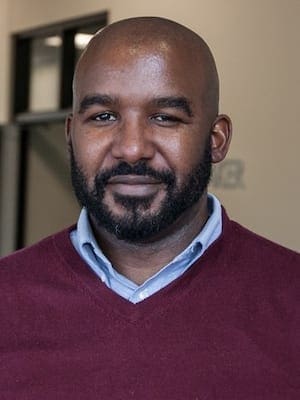Ongoing discussions following the release of the Department of Justice report on the behaviors and actions perpetrated by the police and courts of Ferguson, Missouri, reveal that our nation is divided along multiple lines.
Religious and civil rights leaders of all races and nationalities have spoken out against the actions and attitudes of those in leadership in Ferguson, resoundingly condemning their acts as racist and predatory.
On the other side of the debate are people who have said that the report is flawed, a political tool that seeks to appease race-baiters and panders to one particular group of people.
Others have said that, for the good of all, we should punish those who have been implicated in the report and move on. The things that have been found out to have occurred in Ferguson don’t happen everywhere. We’re tired of hearing, reading and talking about it.
As this debate continues, I am reminded that the church can’t point fingers at any other organization because we still have our own challenges to overcome.
Someone once said that Sunday is the most segregated day of the week. It may be hard for the church to dispute that. My personal experiences in ministry have sometimes reflected this.
I am part of an interracial family. I am black, and my wife is white.
We have been blessed to serve within several congregations where our mixed race relationship was not an issue.
But, more often than not, when I am invited to speak at churches, the members of my family are not always welcomed equally.
In the past, whenever I was invited to speak at a historically black church, multiple members of those congregations wouldn’t speak to my wife or shake her hand. Similar things have occurred at historically white churches.
Earlier this year, I spoke at a white church and the gossip that ensued after we left was based on the fact that my wife was white.
Let me be clear: I don’t think that all churches that are primarily made up of one race are racist or segregated congregations.
What I am saying is that one of the simplest evidences of our commitment to seeing and treating people as equals before God is through the diversity that is found within our congregations and leadership. That diversity is not only racial. It also includes gender and economic diversity.
How can congregations help to incorporate more diversity?
The process should begin with an examination of the underlying congregational culture. This can occur by asking a few questions and answering them honestly.
Do you value people because they are God’s creation or because of what they bring to your organization?
Do you allow, empower and encourage people to lead based on the evidence of God’s movement in their lives or based on what they look like, where they earned their degrees, or how that person’s level of affluence can help your congregation become more popular or successful?
Does the makeup of your congregation and leadership reflect the diversity that we anticipate to see when we all meet God face to face?
Someone may ask, “Are you saying that my church is racist if no people of color are attending or are in leadership?” or “Are you saying that our church is sexist if we don’t have women in leadership?” No, not at all.
What I am saying is that diversity usually doesn’t happen by accident.
It happens when we see all people as being created equal in the image of God and when equal participation in the life of the body of Christ is given priority as a vitally important part of the process of completing the kingdom work that God has given to all of us.
 Terrell Carter is director of the Foundations in Ministry program for Central Baptist Theological Seminary in St. Louis. He is the author of “Walking the Blue Line: A Police Officer Turned Community Activist Provides Solutions to the Racial Divide.” His writings can be viewed at his website, and you can follow him on Twitter @tcarterstl.
Terrell Carter is director of the Foundations in Ministry program for Central Baptist Theological Seminary in St. Louis. He is the author of “Walking the Blue Line: A Police Officer Turned Community Activist Provides Solutions to the Racial Divide.” His writings can be viewed at his website, and you can follow him on Twitter @tcarterstl.
A pastor, author and educator living in St. Louis, Missouri, he is the author of several books, including The Gospel According to Broadway and Taking Apart Bootstrap Theology: Gospel of Generosity and Justice.

